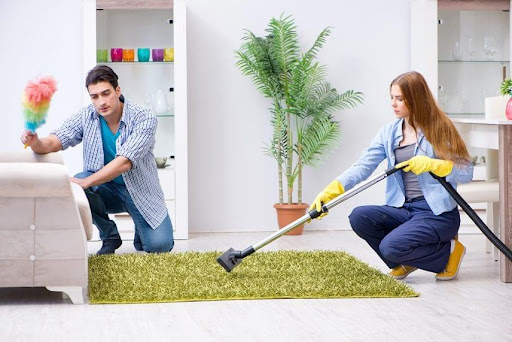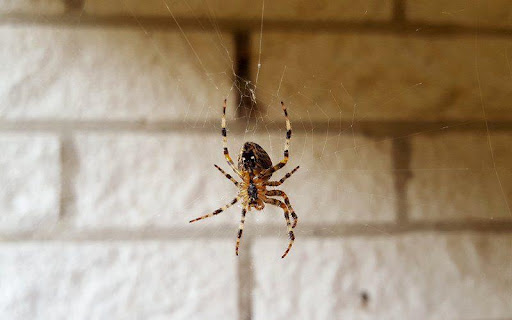
Pest control treatments are a necessary evil when it comes to maintaining a healthy and safe environment. While they can certainly be effective at eliminating pests, they can also have unintended effects on the health of those who inhabit the space. Therefore, it is important to understand the potential health risks of pest control treatments, and to take steps to clean your place after it has been treated.
What Does Cleaning After Pest Control Treatment Mean?
The first step in cleaning your place after a pest control treatment is to remove any dead pests. Dead pests can attract other pests, as well as release toxins and bacteria into the air. Therefore, it is important to clean up any dead pests immediately. Vacuuming the area is a good way to remove dead pests, as well as to remove any residual pesticides that may remain.
The next step in cleaning your place after a pest control treatment is to remove any residual pesticides. Pesticides can linger in the air, on surfaces, and in furniture, and can cause health problems if they are inhaled or ingested. Therefore, it is important to thoroughly clean all surfaces, including carpets and furniture, to ensure that all residual pesticides are removed. Vacuuming and mopping are good ways to remove residual pesticides.
The third step in cleaning your place after a pest control treatment is to reduce the humidity in the area. High humidity can attract pests, and can also create the perfect environment for mold and mildew to grow. Therefore, it is important to reduce the humidity in the area by using a dehumidifier. This will help to keep the area dry, and reduce the chances of attracting pests.

The fourth step in cleaning your place after a pest control treatment is to reduce the number of hiding spots for pests. Pests tend to hide in dark, damp places. Therefore, it is important to remove any clutter and debris from the area, and to seal any cracks or crevices that may be present. This will reduce the number of places where pests can hide, and will make it easier to keep the area pest-free.
The fifth and final step in cleaning your place after a pest control treatment is to reduce the amount of food and water available to pests. Pests are attracted to food and water, and they will often use these sources to breed and multiply. Therefore, it is important to reduce the amount of food and water available to pests, by keeping food in airtight containers and securely sealing any water sources.
Cleaning for Healthy and Safe Environment
Cleaning your place after a pest control treatment is essential for maintaining a healthy and safe environment, and for reducing the risk of health problems caused by the treatment. By removing dead pests, removing residual pesticides, reducing the humidity and number of hiding spots, and reducing the amount of food and water available to pests, you can ensure that your home is free of pests and safe from potential health risks.
How to Dispose of Pest Control Chemicals
Pest control chemicals are often necessary for effective pest control treatments, but they can present a risk to people and the environment if not handled properly. Also, there are many safe pest control products available in the market that you should take a look that are easy to dispose. Therefore, it is important to know how to properly dispose of these chemicals.
The first step in disposing of pest control chemicals is to store the chemicals in their original containers. This ensures that the chemicals are properly stored, and that they will not cause any damage to the environment. It is also important to label the containers, so that you know exactly what the contents are.
The second step in disposing of pest control chemicals is to take the containers to a hazardous waste facility. These facilities are equipped to properly dispose of hazardous materials, and they can ensure that the chemicals are not released into the environment. It is important to contact your local hazardous waste facility to determine their disposal process.

The third step in disposing of pest control chemicals is to take the containers to a hazardous waste collection event. Many cities and towns have hazardous waste collection days, in which residents can bring hazardous materials for proper disposal. It is important to contact your local government to see if a hazardous waste collection event is available in your area.
The fourth step in disposing of pest control chemicals is to take the containers to a hazardous waste transfer station. These stations are designed for proper disposal of hazardous materials, and they can ensure that the chemicals are not released into the environment. It is important to contact your local government to see if a hazardous waste transfer station is available in your area.
Finally, it is important to always follow the instructions on the label of the chemical. Each chemical will have specific instructions on how to properly dispose of the material, and it is important to follow these instructions to ensure the safety of yourself and the environment.
Does Cleaning Help Get Rid of a Pest Infestation?
Cleaning can certainly help to reduce the number of pests in a home, but it is not a foolproof solution. In fact, many pest infestations are caused by poor sanitation, so it is important to maintain a clean and hygienic environment in order to reduce the number of pests in your home.
The first step in cleaning to get rid of a pest infestation is to remove any food sources. Food sources are the primary attraction for pests, so it is important to remove any potential food sources from the home. This includes removing old food from the pantry and cabinets, and sealing any food that is being stored.

The second step in cleaning to get rid of a pest infestation is to remove any clutter and debris. Pests often hide in cluttered and debris-filled areas, so it is important to remove any clutter and debris from the home. This includes removing any cardboard boxes, newspapers, and other items that could harbor pests.
The third step in cleaning to get rid of a pest infestation is to reduce the humidity in the home. High humidity can create a perfect environment for pests, so it is important to reduce the humidity in the home. This can be done by using a dehumidifier, or by opening windows and using fans.
The fourth step in cleaning to get rid of a pest infestation is to seal any cracks and crevices in the home. Pests often hide in cracks and crevices, so it is important to seal any potential hiding spots. This can be done with a variety of sealants, including caulk, foam, and even steel wool.

Finally, it is important to maintain a clean and sanitary environment in order to reduce the number of pests in your home. This can be done by regularly vacuuming and mopping, and by removing any clutter and debris from the home.
Final Words
In conclusion, cleaning can certainly help to reduce the number of pests in your home, but it is not a foolproof solution. Therefore, it is important to take steps to reduce the number of food sources, remove any clutter and debris, reduce the humidity in the home, seal any cracks and crevices, and maintain a clean and sanitary environment in order to reduce the chances of a pest infestation.
You may be interested in: The High Cost of Employee Personal Injury Lawsuits

